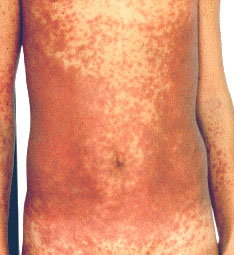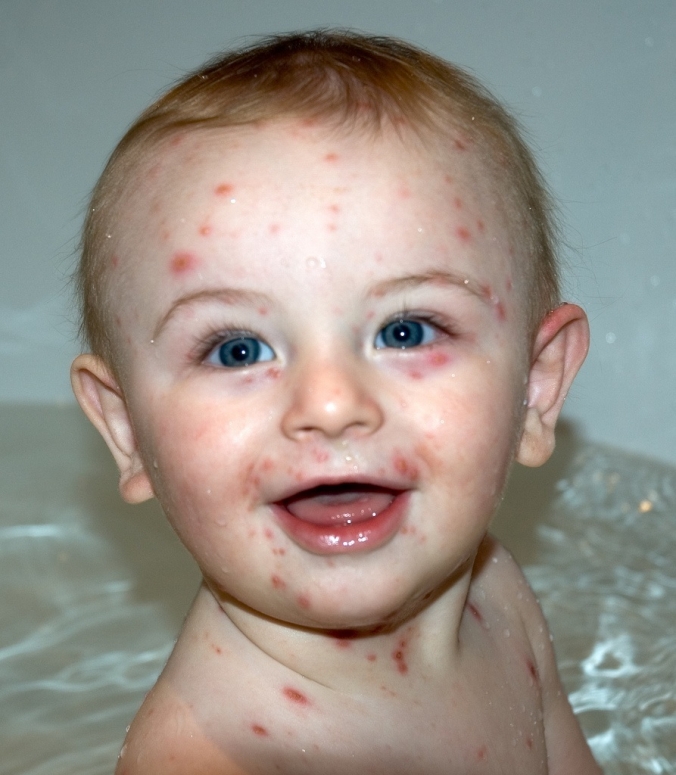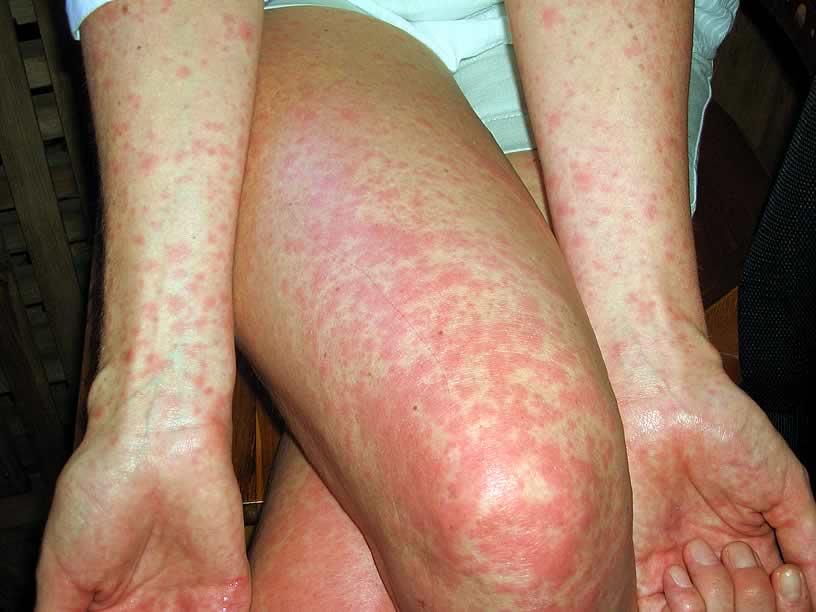Scarlet Fever
The figure shows the red spots on the body of a scarlet fever patient
What is Pertusis
It is caused by the streptococcal bacteria, which produce a toxin that leads to the hallmark red rash of the illness.
The main risk factor is infection with the bacteria that causes strep throat. A history of strep throat or scarlet fever in the community, neighborhood, or school may increase the risk of infection.
Symptoms
The time between becoming infected and having symptoms is short, generally 1 - 2 days. The illness typically begins with a fever and sore throat.
The rash usually first appears on the neck and chest, then spreads over the body. It is described as "sandpapery" in feel. The texture of the rash is more important than the appearance in confirming the diagnosis. The rash can last for more than a week. As the rash fades, peeling (desquamation) may occur around the fingertips, toes, and groin area.
Other symptoms include:
- Abdominal pain
- Bright red color in the creases of the underarm and groin (Pastia's lines)
- Chills
- Fever
- General discomfort (malaise)
- Headache
- Muscle aches
- Sore throat
- Swollen, red tongue (strawberry tongue)
- Vomiting
Child with scarlet fever
Treatment
Antibiotics are used to kill the bacteria that causes the throat infection. This is crucial to prevent rheumatic fever, a serious complication of strep throat and scarlet fever.
Outlook (Prognosis)
With proper antibiotic treatment, the symptoms of scarlet fever should get better quickly. However, the rash can last for up to 2 - 3 weeks before it fully goes away.
Prevention
Bacteria are spread by direct contact with infected people, or by droplets exhaled by an infected person. Avoid contact with infected people.
The figure shows the red spots on the thigh and hands
Can Scarlet Fever be Spread?
The bacterium that causes scarlet fever can be spread via droplets from the mouth or nose of the infected person, so it is possible to spread from one person to another. Good hygiene practices go a long way in preventing the spread if someone is near to a person with scarlet fever. Good hand washing practices and other commonsense sanitary measures are very helpful, including not sharing silverware or drinking glasses with someone who has scarlet fever.
Is Scarlet Fever Dangerous?
Group A streptococcal infections can be quite serious if left untreated. Without intervention a person can develop rheumatic fever, heart and kidney damage, meningitis, cellulitis, sinusitis, otitis media (middle ear infection), serious skin infections and several other disorders.


